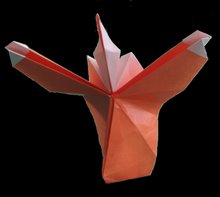
One of the works I was involved this year on the III Chilean International Convention was the edition of the conmemorative book of it. We had a deep debt with many authors who had sent their works for the last year's book and weren't published because the reception was closed and the book was already been printed; several friends from Mexico, Colombia and Bolivia, among other countries.
Our Region does not have enough media nor publications to show and share the enormous work that hundreds of creators do in silence, with remarkable devotion and dedication. We decided then to put an special latin american accent on this year's book, trying to collect a wide number of works from many countries and different levels of hardness. Someway, it went beyond our craziest dreams: More than 40 models, from 11 countries, form th 130 pages of this book, where pressence of Masters Nicolas terry from France, Román Díaz from Uruguay, Daniel Naranjo from Colombia and Fernando Gilgado from Spain honore us far beyond our expectations, setting us a hard mark for next year.
With pride and humility I present here the Index of figures (in spanish), in a way to spread the existence of this beautiful book in which we put so much work and love. I want to highlight specially the gorgeous stars from a great friend and talented friend, since now unplublished: Aldo Marcell from Nicaragua, altogether with the huge group of friends from Colombia who sent us their fantastic models.






























